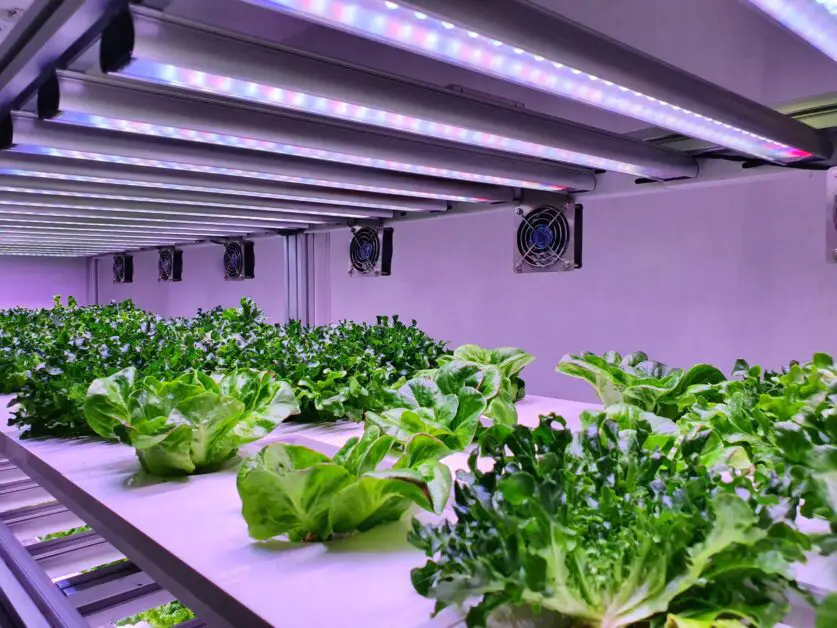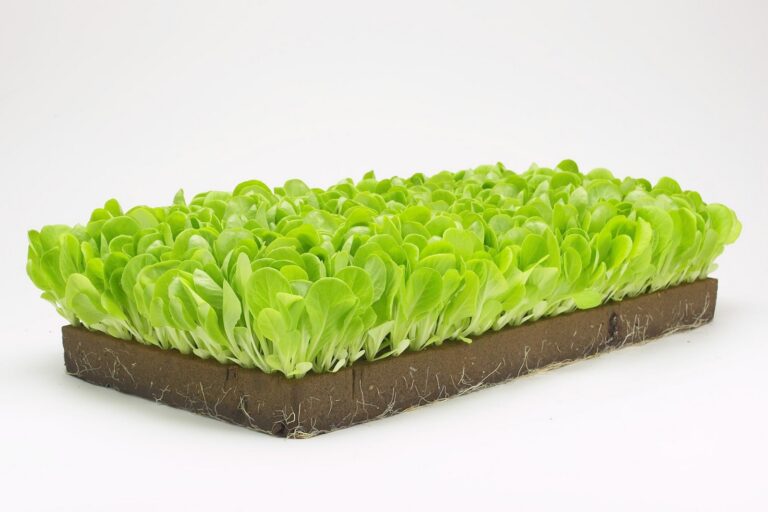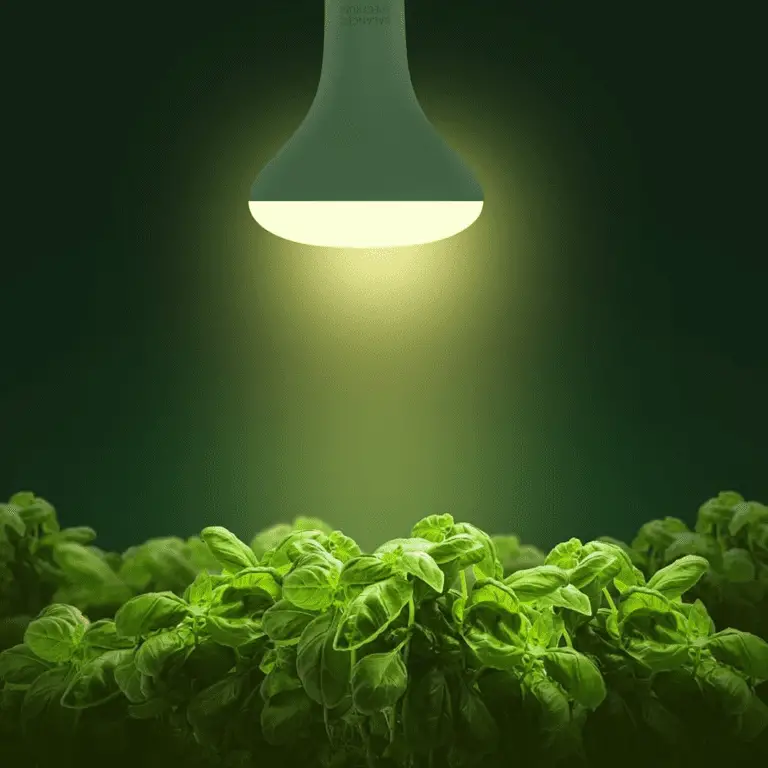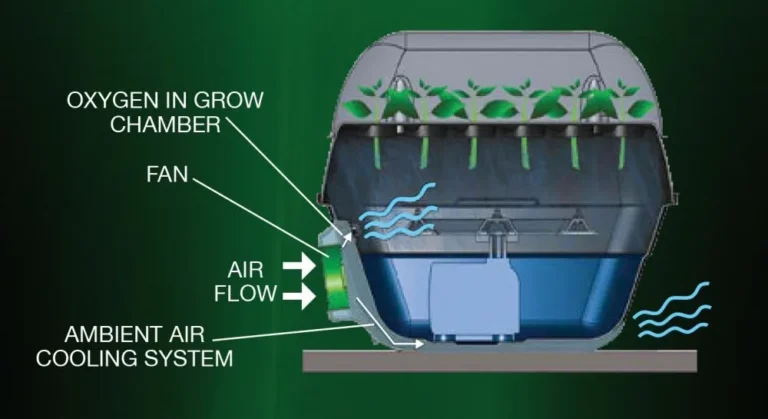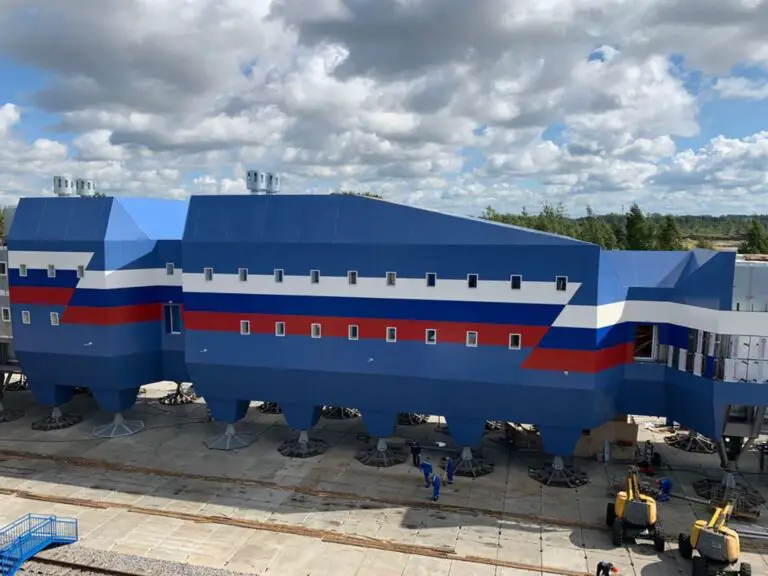Hydroponic Raspberries: How to Grow Fresh and Flavorful Raspberries in Water
Table of Contents
The Benefits of Growing Raspberries Hydroponically
When it comes to growing raspberries, hydroponics can offer a range of benefits that traditional soil-based cultivation may not be able to provide. One of the primary advantages of growing raspberries hydroponically is the ability to control and optimize growing conditions. By eliminating soil, growers can have full control over the nutrients, water, and oxygen levels that the plants receive, ensuring they get precisely what they need for optimal growth.

In addition to precise control, hydroponic systems also offer a more efficient use of resources. With traditional soil-based cultivation, plants often compete for nutrients and water, leading to inefficient growth and potentially lower yields. However, in a hydroponic setup, each raspberry plant receives direct access to the necessary resources, eliminating competition and promoting more efficient nutrient uptake. This efficiency can result in higher yields and healthier plants in the long run.
Understanding the Hydroponic System for Raspberry Cultivation
The hydroponic system is a popular and efficient method for cultivating raspberries. Unlike traditional soil-based farming, hydroponics allows for the precise control of nutrient delivery, water, and environmental conditions, maximizing plant growth and productivity. By understanding the key components of a hydroponic setup, gardeners can create an optimal environment for raspberry cultivation.
One of the main elements of a hydroponic system is the growing medium. Unlike soil, which can vary in composition and quality, hydroponics typically utilizes inert mediums such as coconut coir, perlite, or rockwool. These mediums provide stability for the plants’ root systems while allowing for excellent aeration and water retention. Additionally, hydroponics eliminates the risk of soil-borne diseases and pests, ensuring healthier plants and higher yields.
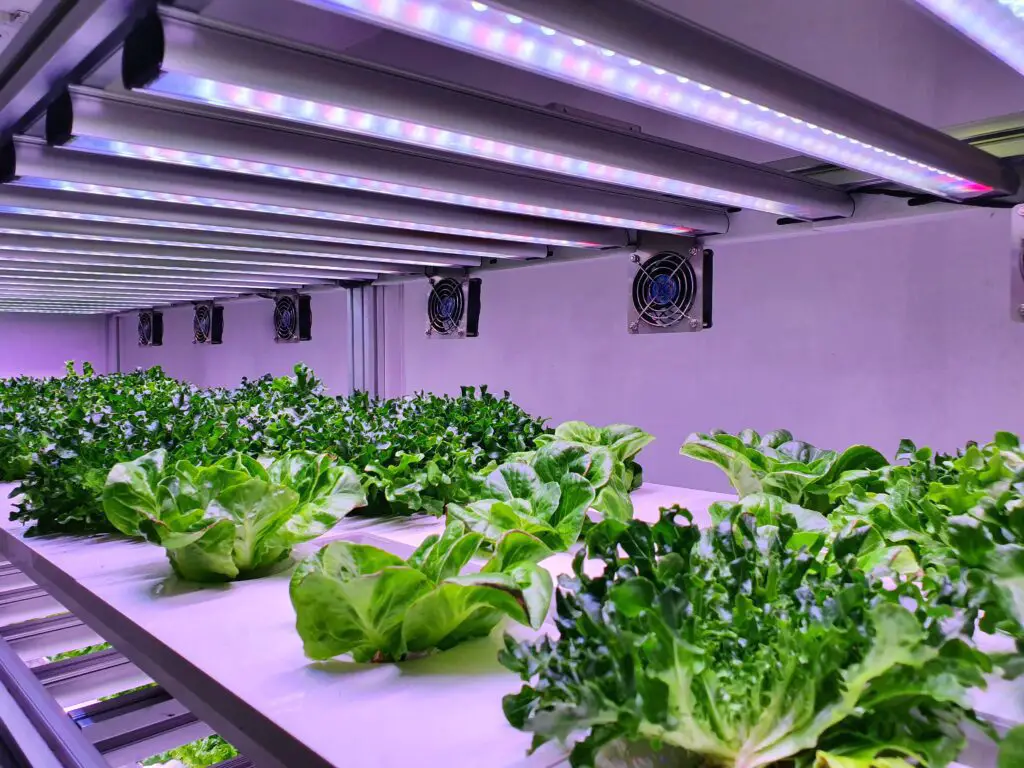
Another essential component of a hydroponic system is the nutrient solution. Raspberries, like other plants, require a balanced mix of macronutrients (such as nitrogen, phosphorus, and potassium) and micronutrients (such as iron, manganese, and zinc). In a hydroponic setup, the nutrient solution is directly delivered to the plant roots, allowing for precise control and efficient absorption. This eliminates the need for complex soil fertilization methods and reduces the risk of nutrient deficiencies or toxicities. Regular monitoring and adjustment of the nutrient solution are necessary to ensure optimal plant growth and fruit development.
Selecting the Ideal Raspberry Varieties for Hydroponic Growth
Selecting the ideal raspberry varieties for hydroponic growth is a crucial step in ensuring a successful and productive harvest. With the right variety, you can maximize your yield and achieve superior quality berries that are packed with flavor. When choosing raspberry varieties for hydroponics, it is important to consider several factors, including growth habits, disease resistance, and fruit characteristics.
Firstly, consider the growth habits of the raspberry variety. Some varieties are classified as “erect” or “upright,” which means they have sturdy canes that grow in an upright manner. These varieties are easier to manage and require less support. On the other hand, “trailing” varieties have canes that sprawl along the ground, requiring trellising or other support structures. Selecting a variety that matches your preferred growing method will make cultivation more efficient.
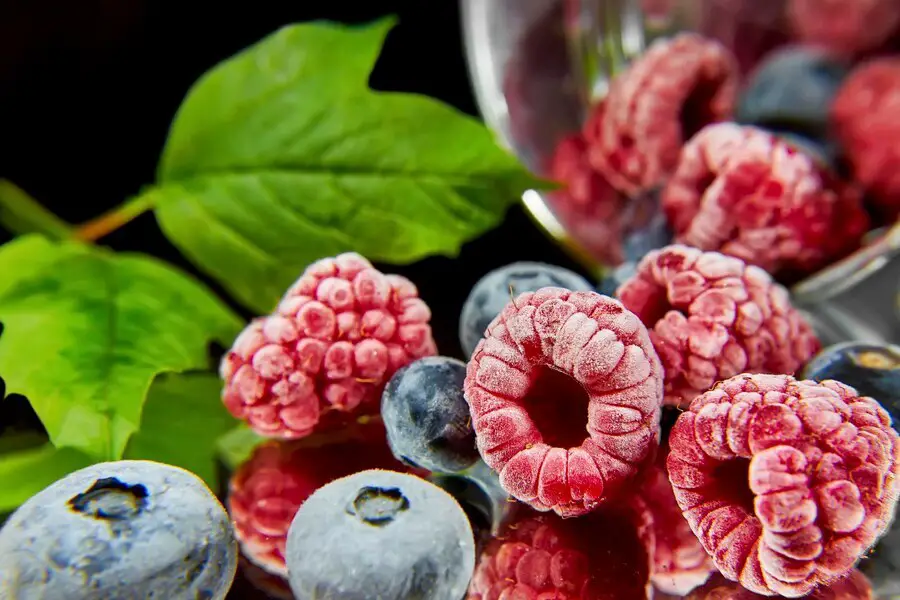
Secondly, disease resistance is a crucial aspect to consider when selecting raspberry varieties for hydroponics. Certain varieties have developed resistance to common raspberry diseases such as Phytophthora root rot or raspberry mosaic virus. By choosing disease-resistant varieties, you can minimize the risk of plant losses and reduce the need for chemical treatments.
Lastly, consider the fruit characteristics of the raspberry varieties. Different varieties exhibit variations in flavor profiles, berry size, color, and firmness. Consider your target market or personal preference when making your selection. For example, if you are catering to consumers who value large, sweet berries, choose varieties known for these attributes. Conversely, if you are planning to use the raspberries for processing or culinary purposes, selecting varieties with intense flavor or high acidity may be more suitable.
Overall, selecting the ideal raspberry varieties for hydroponic growth requires careful consideration of growth habits, disease resistance, and fruit characteristics. By choosing varieties that match your growing technique and market preferences, you can ensure a successful and rewarding raspberry cultivation experience. Remember to consult reputable sources or seek advice from experienced growers to make informed decisions.
Preparing the Hydroponic Setup for Raspberry Cultivation
Preparing the hydroponic setup for raspberry cultivation is an important step in ensuring a successful harvest. Before setting up your hydroponic system, it is crucial to consider the space available for your raspberry plants. Raspberries require ample room for growth, so choose a location that provides enough space for the plants to spread and flourish.
Next, select the appropriate equipment for your hydroponic setup. This includes a reservoir for holding the nutrient solution, a pump to circulate the solution, and a timer to automate the watering process. Additionally, you will need a growing medium to support the plants, such as clay pebbles or coco coir.
Once you have gathered all the necessary equipment, it is time to assemble your hydroponic system. Start by setting up the reservoir and connecting the pump and timer. Ensure that the system is properly sealed to prevent any leaks. Then, fill the reservoir with water and add the appropriate nutrient solution according to the manufacturer’s instructions.
After setting up the hydroponic system, it is essential to properly sterilize it to prevent the growth of harmful bacteria and fungi. Clean all the equipment with a mild bleach solution and rinse thoroughly before adding the plants.
This table shows the preparing of a hydroponic setup for raspberry cultivation:
| Equipment/Items Needed | Description |
|---|---|
| Grow Trays | Select trays suitable for hydroponic growing, ensuring they accommodate raspberry plants’ root systems. |
| Growing Medium | Choose a suitable growing medium such as perlite, coco coir, or rockwool cubes for supporting the raspberry plants. |
| Reservoir | A reservoir or container to hold the nutrient solution required for hydroponic cultivation. Ensure it’s large enough to accommodate the plant’s needs. |
| Nutrient Solution | A balanced nutrient solution specifically designed for raspberry plants, containing essential macronutrients and micronutrients. |
| pH Testing Kit | A pH testing kit to monitor and maintain the optimal pH level of the nutrient solution (around 5.5 to 6.5 for raspberries). |
| Water Pump | A water pump to circulate the nutrient solution through the system, ensuring adequate delivery to the plants’ roots. |
| Growing Lights | LED grow lights or suitable artificial lighting to provide the necessary spectrum and intensity for raspberry growth in an indoor setup. |
| Support Structures | Trellises or support structures to assist raspberry canes as they grow and bear fruit. |
| pH Adjusting Agents | pH adjusting agents like pH up or down solutions to regulate the pH of the nutrient solution as needed. |
| Timer | Timer or automation system for regulating the timing and duration of light and nutrient solution cycles. |
By following these steps and ensuring a well-prepared hydroponic setup, you can create an optimal environment for your raspberry plants to thrive. With the right equipment and attention to detail, you will be on your way to a bountiful raspberry harvest.
Choosing the Right Growing Medium for Hydroponic Raspberries
Choosing the right growing medium is crucial for successful hydroponic raspberry cultivation. The growing medium serves as a support system for the plants, anchoring their roots and providing them with access to water, nutrients, and oxygen. In hydroponics, the growing medium is responsible for holding the perfect balance of moisture and air, allowing the raspberry plants to thrive.
Several options are available when it comes to choosing a suitable growing medium for hydroponic raspberries. Rockwool, a popular choice among hydroponic growers, is made from spun volcanic rock fibers and provides excellent water retention and aeration. Another commonly used medium is coco coir, which is derived from coconut husks and offers good moisture retention and drainage properties. Perlite, vermiculite, and clay pellets are also commonly used in hydroponics, each with their own unique benefits and characteristics.
The selection of the growing medium should be based on factors such as water retention, drainage capability, pH neutrality, and ability to maintain a healthy root environment. Experimenting with different growing mediums and monitoring their performance can help determine the most suitable option for your hydroponic raspberry setup. Additionally, it’s important to consider factors such as cost, availability, and environmental impact when making your decision. By carefully selecting the right growing medium, you can ensure optimal conditions for your hydroponic raspberries, leading to healthier plants and bountiful harvests.
Providing Optimal Nutrients for Healthy Raspberry Plants
Providing optimal nutrients is crucial for achieving healthy raspberry plants in a hydroponic system. As soil is not used in this method, it is important to carefully balance and supply all essential nutrients directly to the plants. Hydroponics offers a controlled environment where the nutrient solution can be precisely tailored to meet the specific needs of raspberries, allowing for optimal growth and productivity.
One of the key nutrients needed for healthy raspberry plants is nitrogen. It plays a vital role in promoting leaf and stem growth, as well as in the development of vibrant green foliage. Phosphorus, another essential nutrient, supports root development and overall plant vigor. Potassium, on the other hand, aids in fruit formation and ripening, improving the quality and yield of the raspberries.
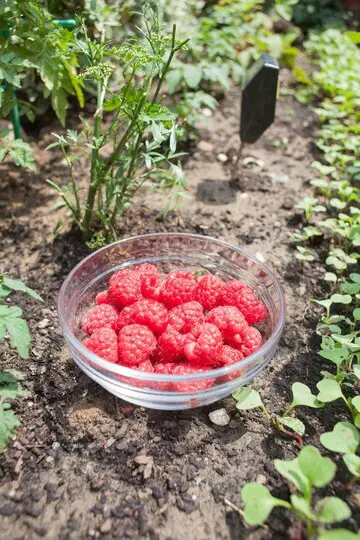
In addition to these primary macronutrients, secondary macronutrients such as calcium, magnesium, and sulfur, along with micronutrients like iron, manganese, and zinc, are equally important for the well-being of raspberry plants. These micronutrients support various physiological functions, including photosynthesis, enzyme activation, and overall plant health. It is essential to maintain a proper balance of all these nutrients in the hydroponic solution to ensure optimal raspberry growth and productivity.
Stay tuned as we explore further aspects of hydroponic raspberry cultivation: how to maintain the ideal pH level for raspberry hydroponics.
Maintaining the Ideal pH Level for Raspberry Hydroponics
Maintaining the ideal pH level is crucial for successful raspberry cultivation in a hydroponic system. Raspberry plants thrive in slightly acidic soil, with a pH range between 5.5 and 6.5. Deviations from this optimal pH range can lead to nutrient deficiencies, poor plant growth, and decreased yield.
To ensure the ideal pH level in your hydroponic raspberry setup, regular monitoring and adjustments are necessary. This can be achieved by testing the pH of the nutrient solution using a pH meter or pH test strips. If the pH level is too high (alkaline), it can be lowered by adding an acidic solution like vinegar or citric acid. Conversely, if the pH level is too low (acidic), it can be raised by adding a basic solution such as potassium hydroxide.
It’s important to remember that the pH level can fluctuate over time as plants take up nutrients from the solution. Therefore, regular monitoring and adjustment are essential to maintain a stable pH level throughout the growth cycle. By keeping the pH within the optimal range, you can ensure healthy raspberry plants and maximize your yield in a hydroponic system.
Managing Water and Oxygen Levels in the Hydroponic System
In hydroponic systems, managing water and oxygen levels is crucial for the successful growth of raspberries. Water serves as a medium for delivering essential nutrients to the plants, while oxygen is necessary for root respiration. Finding the right balance between water and oxygen is essential to create an optimal growing environment.
One method of managing water and oxygen levels is through the use of an ebb and flow system. This system involves periodically flooding the roots with a nutrient-rich solution and then allowing the excess water to drain away. By providing the plants with water for a specific period and then allowing it to drain, the roots can absorb the necessary nutrients while also receiving the oxygen they require.
Another method is the nutrient film technique (NFT), where a thin film of nutrient solution flows continuously over the roots. As the solution moves, it creates a thin layer that provides both moisture and oxygen to the roots. This technique allows for efficient nutrient absorption and oxygen exchange, ensuring the plants receive the necessary resources for growth.
Proper monitoring of water and oxygen levels is essential in hydroponics. Regularly checking the moisture content of the growing medium and the oxygen levels within the system can help prevent issues such as over-watering or oxygen deprivation. Implementing sensors or using monitoring systems can aid in maintaining the optimal balance for healthy raspberry plants.
By effectively managing water and oxygen levels in hydroponic systems, gardeners can provide the necessary conditions for raspberry plants to thrive. The precise control over these factors allows for maximum nutrient absorption and ensures that the plants receive adequate oxygen for respiration. With the right balance, hydroponic raspberries can flourish and produce bountiful harvests.
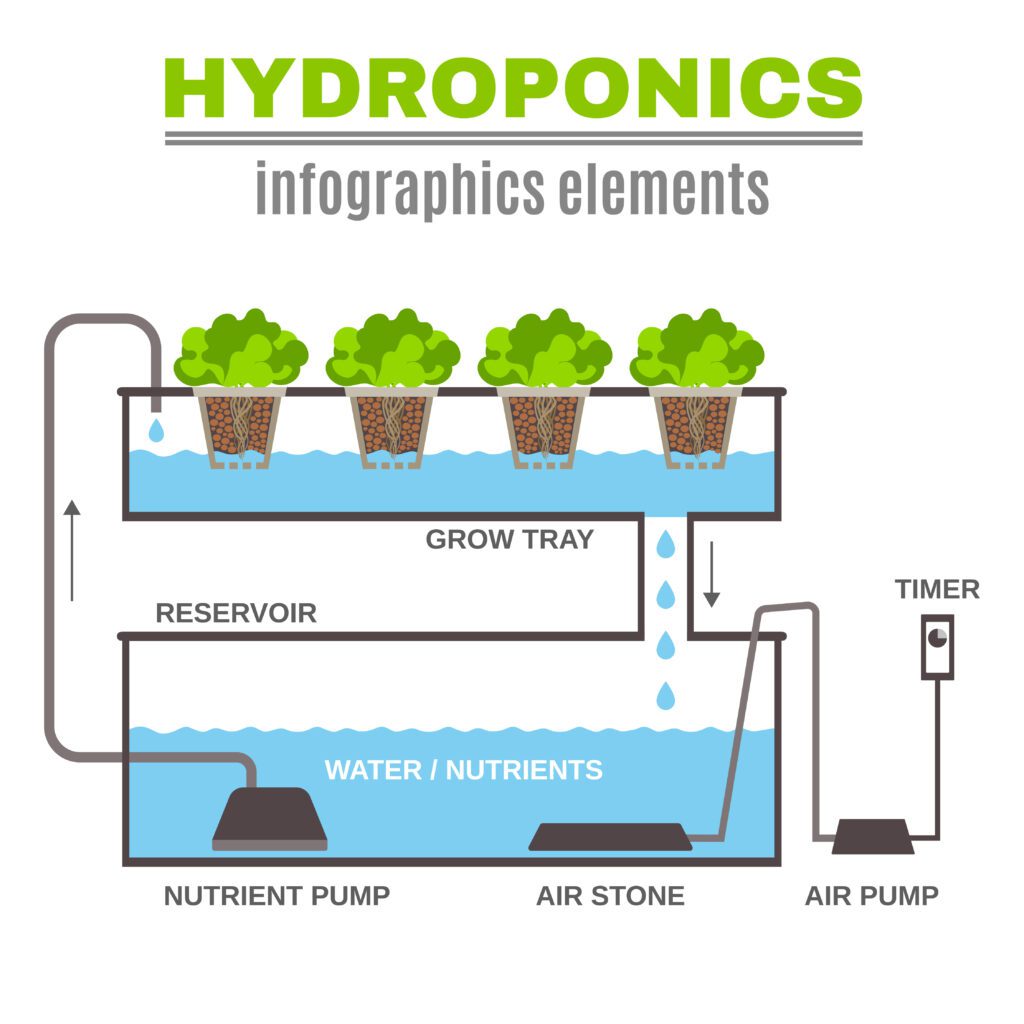
Controlling Temperature and Humidity for Successful Raspberry Growth
Controlling temperature and humidity is crucial for the successful growth of raspberries in a hydroponic system. Raspberries thrive in environments with moderate temperatures and humidity levels, so it is essential to maintain the ideal conditions to ensure optimal growth and yield.
Temperature control is vital to prevent raspberries from experiencing stress or damage. Ideally, the temperature should be kept between 65°F to 75°F (18°C to 24°C) during the day, and slightly cooler at night. Fluctuations in temperature can negatively impact the plants, causing stunted growth or even death. To maintain a consistent temperature, it is recommended to use a combination of ventilation, fans, and cooling systems, such as evaporative coolers or air conditioning units, if necessary.
In addition to temperature, humidity levels also play a crucial role in the growth of hydroponic raspberries. The humidity should be kept around 50% to 70% to provide the perfect balance of moisture without excessive dampness. High humidity can increase the risk of diseases, such as powdery mildew, while low humidity can lead to dehydration and reduced growth. To maintain the ideal humidity, a combination of humidifiers and dehumidifiers can be used, along with proper ventilation to promote air circulation. Regular monitoring and adjustment of temperature and humidity levels are essential to ensure the best growing conditions for hydroponic raspberries.
Preventing and Managing Common Pests and Diseases in Hydroponic Raspberries
Preventing and managing common pests and diseases in hydroponic raspberries is essential for maintaining healthy and thriving plants. While hydroponic systems offer a controlled environment that minimizes the risk of pests and diseases, it is still important to implement preventive measures and be vigilant in monitoring for any potential issues.
One effective way to prevent pest infestations in hydroponic raspberries is to maintain a clean and hygienic growing environment. Regularly clean and sterilize all equipment, including trays, containers, and tools, to eliminate any potential sources of contamination. Additionally, make sure to remove any dead leaves or plant debris from the system promptly, as they can attract pests.
When it comes to disease prevention, selecting disease-resistant raspberry varieties can significantly reduce the risk of infections. Some common diseases that can affect hydroponic raspberries include root rot, powdery mildew, and gray mold. By choosing resistant varieties, you can minimize the chances of these diseases affecting your plants. Moreover, ensuring proper air circulation and ventilation within the hydroponic system will help reduce humidity and prevent the development and spread of fungal infections.
The table below here shows common Pests and Diseases in Hydroponic Raspberries:
| Pest/Disease Name | Description | Preventive Measures | Management/Treatment | Products/Tools |
|---|---|---|---|---|
| Spider Mites | Tiny pests that suck plant juices, causing leaves to yellow and wither. | Maintain proper humidity levels, regularly inspect plants. | Use neem oil or insecticidal soap. | Neem oil, insecticidal soap |
| Powdery Mildew | Fungal disease causing a powdery white growth on leaves. | Ensure good airflow, avoid overcrowding plants. | Apply a baking soda solution or fungicides. | Baking soda solution, fungicides |
| Aphids | Small insects that feed on plant sap, causing distortion and yellowing of leaves. | Introduce beneficial insects, like ladybugs. | Use insecticidal soap or neem oil. | Ladybugs, insecticidal soap, neem oil |
By implementing these preventive measures, you can significantly reduce the risk of pests and diseases in your hydroponic raspberry cultivation. However, it is important to regularly monitor your plants and system for any signs of infestations or infections. Early detection and swift action can prevent significant damage and ensure the continued health and productivity of your hydroponic raspberry plants.
Pruning and Training Techniques for Maximum Raspberry Yield
Pruning and training techniques play a crucial role in maximizing the yield of hydroponic raspberries. By properly managing the growth and structure of raspberry plants, gardeners can ensure healthier plants and a bountiful harvest.
One key technique is pruning, which involves removing unwanted or damaged canes to promote new growth and maintain a balanced plant structure. It is recommended to prune raspberries annually during the dormant season, typically in late winter or early spring. Pruning helps to increase airflow and sunlight penetration, reducing the risk of diseases and improving fruit quality. To prune raspberries, gardeners should remove the oldest canes, leaving behind only the healthiest and most productive ones.
Here, you can get more information about hydroponic raspberry through this video:
In addition to pruning, training is another essential technique for maximizing raspberry yield. Training involves directing the growth of raspberry canes along support structures, such as trellises or wires, to promote better fruiting and easier maintenance. By training the canes to grow vertically, gardeners can optimize light distribution, increase air circulation, and reduce the risk of fungal diseases. Gardeners can use twine, clips, or plastic ties to secure the canes to the support structures, ensuring they are upright and well-spaced. Training should be done early in the growing season, allowing the canes to grow upward and produce a greater number of fruits.
An integrated approach of pruning and training techniques enables gardeners to create an ideal environment for raspberry plants and ensure maximum yield. By implementing these techniques, gardeners can enjoy larger and healthier raspberries, all while minimizing the risk of disease and simplifying the maintenance process. Gardening enthusiasts should familiarize themselves with the specific pruning and training requirements of the raspberry varieties they are cultivating to optimize their harvests.
Harvesting and Storing Hydroponic Raspberries for Freshness and Flavor
Harvesting and storing hydroponic raspberries properly is crucial to ensure the freshness and flavor of these delicious fruits. When it comes to harvesting, timing is key. Raspberries should be picked when they are fully ripe but still firm. The ideal time to harvest is early in the morning when the temperature is cooler, as this helps to preserve the fruit’s fragile structure and reduce the risk of damage.
To avoid bruising or crushing the raspberries, gently twist and pull the fruit from the stem, ensuring that the intact cap remains attached. Handle the berries with care as they are highly perishable. It is best to place them in shallow containers or trays to prevent any crushing or bruising during transportation.
Watch this video to see how raspberries are stored after harvesting:
Storing hydroponic raspberries properly is essential to maintain their freshness and flavor. Raspberries are delicate fruits and have a short shelf life. To prolong their storage life, it is recommended to store them in the refrigerator at a temperature between 34°F to 38°F (1°C to 3°C). Ensure that the berries are not subjected to any moisture or condensation, as this can lead to mold and spoilage. It is advisable to place the raspberries in a single layer on a paper towel-lined container or shallow tray to absorb any excess moisture and keep them dry.
By following proper harvesting and storage techniques, gardening enthusiasts can enjoy the full flavor and freshness of hydroponic raspberries for an extended period. Whether used in recipes, enjoyed fresh, or preserved for later use, these vibrant and delectable berries are a true delight for any fruit lover.
Troubleshooting Common Issues in Hydroponic Raspberry Cultivation
Troubleshooting common issues in hydroponic raspberry cultivation is essential to ensure optimal growth and a successful harvest. Despite the precise control offered by hydroponics, growers may encounter challenges along the way. Identifying and addressing these issues promptly can help maintain healthy raspberry plants and maximize yield.
One common problem in hydroponic raspberry cultivation is nutrient deficiency or imbalance. This can manifest in different ways, such as yellowing or browning of leaves, stunted growth, or reduced fruit production. To address this issue, regularly monitor nutrient levels in the solution and adjust accordingly. Conducting regular water and nutrient solution tests can help determine the specific elements that may be lacking or excessive, allowing for targeted adjustments to maintain the ideal nutrient balance for raspberry plants.
Another challenge that hydroponic raspberry growers may face is the risk of pests and diseases. Although hydroponics minimizes the risk of soil-borne diseases, other pests and diseases can still affect the plants. Common pests include aphids, spider mites, and whiteflies, while diseases like powdery mildew and root rot may also occur. Implementing integrated pest management strategies, such as utilizing beneficial insects, regularly inspecting plants for signs of infestation, and promptly treating any issues, can help minimize the impact of pests and diseases on hydroponically grown raspberries. Additionally, ensuring proper hygiene measures, such as regularly disinfecting equipment and maintaining a clean growing environment, can help prevent the spread of diseases and maintain the overall health of the raspberry crop.
By staying vigilant and proactively addressing nutrient deficiencies, pests, and diseases, hydroponic raspberry growers can overcome common issues and enjoy a thriving cultivation venture. However, it is crucial to continue learning and adapting as new challenges may emerge. In the following sections, we will delve further into specific troubleshooting techniques and explore additional considerations for successful hydroponic raspberry cultivation. Stay tuned!
Watch this video to avoid these small mistakes!
What are some common issues that can occur in hydroponic raspberry cultivation?
Some common issues that can occur in hydroponic raspberry cultivation include nutrient deficiencies, pH imbalances, pest infestations, and diseases.
How can I prevent nutrient deficiencies in hydroponic raspberry cultivation?
To prevent nutrient deficiencies, it is important to regularly monitor and adjust nutrient levels in the hydroponic system. Use a high-quality nutrient solution specifically formulated for raspberries and follow the recommended feeding schedule.
What can cause pH imbalances in hydroponic raspberry cultivation?
pH imbalances can be caused by factors such as incorrect nutrient solution pH, fluctuations in water alkalinity or acidity, or the accumulation of nutrient salts in the growing medium. Regularly test and adjust the pH levels to maintain the ideal range for raspberry growth.
How can I control pests and diseases in hydroponic raspberry cultivation?
Implementing proper hygiene practices, such as regularly cleaning and disinfecting the hydroponic system, can help prevent pest and disease infestations. Additionally, using organic pest control methods and regularly inspecting plants for signs of pests or diseases can help in early detection and management.
What pruning and training techniques should I use for maximum raspberry yield?
Pruning techniques such as removing dead or diseased canes, thinning overcrowded areas, and training canes horizontally can promote airflow and sunlight penetration, leading to increased fruit production. Regularly monitor the growth of canes and adjust the training techniques accordingly.
How should I harvest and store hydroponic raspberries for freshness and flavor?
Harvest raspberries when they are fully ripe, using a gentle twisting motion to detach them from the plant. Store them in a cool environment, ideally between 32-40°F (0-4°C), and consume them within a few days for the best flavor and freshness.
What are some common troubleshooting tips for hydroponic raspberry cultivation?
Some common troubleshooting tips include checking and adjusting nutrient levels, pH levels, water and oxygen levels, temperature and humidity, and inspecting plants for signs of pests or diseases. Regular monitoring and addressing any issues promptly can help ensure successful hydroponic raspberry cultivation.

Pallavi Gupta is a burgeoning writer at SouthElMonteHydroponics, blending her passion for data analysis with a keen interest in biotechnology. Currently pursuing a Bachelor’s in Biotechnology at Amity University, Pallavi delves into the intricacies of life sciences while gaining hands-on experience in the exciting world of data analysis. Her unique background provides a fresh perspective on hydroponic farming, as she explores the intersection of biotechnology and sustainable agriculture. Through her writing, Pallavi aims to bridge the gap between data-driven insights and innovative farming practices, inspiring others to harness technology for a greener future.

